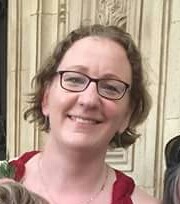Contributor: Helen Jeffries
 A couple of months ago I read the interview with Elly Griffiths on this blog and was inspired to buy one of her books. I thought I would start with the Brighton series and intended to buy the first book but (owing to not paying attention or being an idiot) I bought the most recent by mistake – Now You See Them. I read it at once and spent quite a long time thinking “there’s a surprising amount of backstory here for the first book in a series” before I twigged! At least I proved that there’s no actual need to read Elly Griffiths in the right order as the book was extremely enjoyable as a stand alone although I’m now going back to start at the beginning properly. I liked the Brighton setting and particularly the sense of time with the Mods and Rockers battling on the sea front. The pervasive presence of stage magic was also rather nostalgic for me – I’m of the generation that grew up with the Paul Daniels magic show being ubiquitous on TV and I imagined the character Ruby’s hit programme as being along those lines.
A couple of months ago I read the interview with Elly Griffiths on this blog and was inspired to buy one of her books. I thought I would start with the Brighton series and intended to buy the first book but (owing to not paying attention or being an idiot) I bought the most recent by mistake – Now You See Them. I read it at once and spent quite a long time thinking “there’s a surprising amount of backstory here for the first book in a series” before I twigged! At least I proved that there’s no actual need to read Elly Griffiths in the right order as the book was extremely enjoyable as a stand alone although I’m now going back to start at the beginning properly. I liked the Brighton setting and particularly the sense of time with the Mods and Rockers battling on the sea front. The pervasive presence of stage magic was also rather nostalgic for me – I’m of the generation that grew up with the Paul Daniels magic show being ubiquitous on TV and I imagined the character Ruby’s hit programme as being along those lines.
After that first Brighton book, though, I got on to the Ruth Galloway mysteries and I must confess I was immediately hooked – I’m now on The Chalk Pit which is the ninth and have no intention of stopping. I apologise that there will be slight spoilers in what follows but I’ve tried not to give away too many key plot points. First of all I like the character of Ruth – a heavyish middle-aged woman with an academic background who likes a solitary life is a demographic I can certainly associate with. I also like the setting – I recently attended my godson’s confirmation in a wild part of Norfolk that I have in mind when I read the descriptions of the empty countryside and lonely but spiritual setting that Ruth inhabits. And finally – here’s a spoiler – I doubt there is anyone who’s done a PhD who can’t get a bit of a kick out of the idea of their supervisor drowning in a bog. Come on now – we’ve all visualised it haven’t we? (I’m assuming my supervisor-as-was is never going to be reading this… )
As the Ruth Galloway series continues we get more insight into the returning characters. Clearly anyone would be charmed by Cathbad the druid – he’s a wonderful character with a very accurate but not infallible sixth sense. That fallibility is what makes him real when he could just have been a person who’s always right. Judy Johnson the police sergeant is also a compelling character who could easily warrant a series of her own, were she not overshadowed by DCI Nelson, the main police presence in the series. And even Tanya Fuller who started out as a deeply annoying over-ambitious young police officer, is growing into something much more interesting as her strengths and personal life begin to be revealed. I must reserve a special mention for Phil Trent though. He is the head of Ruth’s department at the University of North Norfolk and is set up as a TV- and funding-obsessed hazard of academic life, but I really like him! I’m so pleased to see from the interview that in a book I have coming up – The Lantern Men – he gets a chapter from his own perspective.
Finally, I have to touch on the spirituality in the series which was discussed in the interview with Elly Griffiths on this blog. Speaking as an Anglican, I must confess to a certain feeling of “oh heck not another lapsed Catholic!” every time one hoves into view – as the godparent of a Norfolk Anglican I am happy to report that a range of Christian denominations is represented in that county! I’m being unfair of course and in The Woman in Blue we do get to see some Anglicans, although not all in a particularly positive light. As I move through the series I hope to see some more of these people – particularly the Anglican vicar with a black belt in Taekwondo who takes muscular Christianity to a very encouraging place when confronting a poison pen writer.
So then, what is the charm of the Ruth Galloway series that has got me hooked? Partly it’s the characters and how they develop, partly it’s the emphasis on archaeology and the past and how they impact the present, but perhaps most of all it’s the sense that although terrible things do happen in the stories, predominantly the characters make the best of things and find the positives. This is a world in which light shines in the darkness and the darkness cannot overcome it, and that’s a very suitable spirituality for this winter season of the year.
